Stephanie bought me this book a couple of months ago, so it’s somewhat coincidental that I’m posting this review now. But it’s always a good time to make an effort to better understand the black experience in America, as difficult and painful that may be. This book was an eye-opener, especially as it relates to the black experience in the automobile. I now understand why African Americans favored certain brands of cars; it turns out there were very practical or even critical considerations as well as the more commonly-assumed ones.
The car in America is seen as the great defining instrument of the 20th century, affording freedom of travel, drastically affecting our built environment, culture, and economy, and affording women greater independence. For African Americans, the car had additional significance, as it provided a vehicle with which to escape the humiliating segregation of public transport and other racist strictures endemic to not only the South, but the whole country. It afforded opportunities to travel in relative comfort, expand horizons and hopefully join the rest of Americans on the road. It became an instrument in the fight against segregation. But it also brought its unique set of perils. Breakdowns, being caught in the wrong neighborhood or town, police stops, overnight accommodations, crashes, medical emergencies, restaurants and tourist destinations all presented degrees of humiliation, harassment, deprivations, physical violence, or worse. Driving while black has not exactly been a smooth ride.
Freedom of movement for white Americans was such a fundamental right that it was not even considered for inclusion into the Constitution. The Supreme Court numerous times reiterated that the right of the freedom of movement was based on the privelages and immunity clause of the Constitution, and that this authority was situated with the states, not the federal government. This was the basis for the many “black codes”, which controlled and criminalized mobility for slaves, free blacks, and later for emancipated blacks, resulting in the Jim Crow laws that varied from state to state.
The term “Jim Crow”, which came to be used to describe the segregation laws enacted in the South after Reconstruction ended in 1877, dates back much earlier, and not just in the South, where blacks couldn’t dream of riding a railroad or having any freedom of movement until after Emancipation. An 1838 newspaper article makes reference to the “Jim Crow” car of The Eastern Railway serving Boston and New England. The great abolitionist Frederick Douglas was repeatedly ejected from its cars, as he was from trains all over the North in his many years of travel. The courts consistently upheld the right of the private train companies to set their own discriminatory policies, despite the state constitution’s guarantee of equal rights.
After Emancipation there began the great migration to the North, Midwest and West, by train, bus or preferably by car, once that became available. Eager to leave the poorly paid jobs in the segregated South, African Americans sought better opportunities in the industrialized cities. And although there were improvements on a number of counts, the North hardly turned out to be the promised land.
It became a ritual for many black families in the North to return annually to their family homes in the South, and increasingly so by car to avoid the dirty old train cars dedicated to them. Even if blacks were allowed to board integrated cars in the North, upon reaching state lines with Jim Crow laws, they were forced to move into the colored car, which invariably were old, and had no amenities.
Traveling by car eliminated those humiliating circumstances, and brought a new degree of freedom of movement. But it was not nearly as stress-free as we might think of in terms of road trips. Each trip required careful planning, with the trip carefully worked out on maps to avoid getting lost in the wrong place. Food and refreshments were packed and carried, as restaurants often did not serve blacks, or if the did, it was only take out at the back kitchen door.
The author, who grew up in a middle class family and lived in a comfortable neighborhood in Newark vividly describes her father’s anxiety about the annual trip to South Carolina to visits family. Ironically, getting lost in the more rural parts of New Jersey was one of his greatest concerns, as that part of the state had a very bad reputation with black motorists.
And if it wasn’t bad enough not being served in restaurants, black travelers invariable encountered visual assaults on the roadsides from chains like this one and many others.
The supplies in the car usually included a “pee can”, as one could not count on being allowed to use the bathroom at gas stations. In fact, some gas stations simply refused to serve blacks. Esso was the exception, with an enlightened post-war corporate policy to welcome blacks, although not all dealers honored it fully. Esso soon became the gas brand of choice for black motorists.
There were much greater dangers on the road than just finding a place to relieve oneself. Black motorists were not uncommonly harassed or assaulted if they found themselves in the wrong town or neighborhood, especially after dark. Many towns all over the country made it clear that they were “sundown towns”, meaning that a black person had better not find themselves in it after sunset.
These were not limited to the South; in fact sundown towns were particularly common all over the Midwest. Villa Grove, Ill. had a whistle on its water tower that blew every day at 6PM to warn blacks that it was time to leave, as many were employed there as domestics and such. The custom did not end until 1998.
There are many documented stories of blacks suffering harassment, physical harm and even death at the hands of white mobs or vigilantes while on the road, especially after dark. This family was was passing Clinton High School in Tennessee in 1956 on a Friday night when a Life magazine photographer documented their terror at the hands of a mob.
They were roughed up, their car damaged, but were lucky to escape with their lives. Others weren’t. And the police looked the other way of course, when they weren’t actively engaged in abusive behavior themselves. African Americans made a point to drive ten miles below the speed limit and astutely observe every traffic sign, as nothing was feared more than being pulled over by the police.
There was another great danger: requiring medical care from a crash or other emergency. Driving was dangerous enough back then, but when many hospitals either didn’t serve blacks, or only in special wings, the risks compounded after a crash. Getting an ambulance that would carry blacks required finding a black funeral home which also typically provided ambulance service, and which then had to find a colored hospital or one that would accept them, often a great distance away. The great singer Bessie Smith was just one of many African American celebrities and notables that died due to inadequate medical treatment after a car crash.
The challenges of finding overnight accommodation and restaurants that served blacks created great logistical challenges, especially to those that had to travel professionally. Some, like the singer Mahalia Jackson (above), bought the biggest and most comfortable car available (a Cadillac, in her case) and tried to sleep in it after a performance while being driven to the next one.
Having to sleep in their cars on the roadside as a consequence of not finding accommodations was a not-uncommon occurrence, and black travelers made a point to travel with the necessary essentials. This was one factor in their preference for large cars.
The many challenges for African Americans in traveling for business or pleasure led to several publications to guide them, the longest-lived one being The Green Book. It listed all of the boarding houses, hotels, motels, restaurants, resorts, doctors, dentists and other resources available to African American travelers. As the cover said: – you may need it.
The hotels that typically served “colored tourists” in the ’40s and ’50s were older hotels that had seen their best days serving whites. But it beat the alternative of sleeping in the car on the side of the road.
By the ’60s, there were an increasing number of better hotels, motels and resorts that catered to the rapidly growing black consumer market. One of the most famous was the Hampton House in Miami, FL.
It became a favorite for the black elite, where one could see Malcom X taking a photo of Muhammad Ali at the bar on his birthday.
Other black-owned motels, like the Lorraine in Memphis, TN, the site of MLK’s assassination, were often targets in their own right by white vigilantes, as their owners made them available to be used as organization centers for the civil rights movement.
While the federally-regulated airlines were more accommodating to black travelers than trains or buses, there was still the problem of ground transportation, as white taxi drivers typically refused to pick up blacks, and black taxi companies were either barred from airports, or couldn’t make enough money there due to the scarcities of black fares. That meant that black fliers invariably rented cars if they weren’t picked up by family or friends.
The many difficulties and dangers to black motorists had a very real influence on their choice of cars. They most of all valued reliability, as breakdowns were problematic at best and deadly at worst. And comfortable, in case of unexpected overnight stays in it. Not surprisingly, Buick was a favorite brand, especially in the 40s and 50s, as for these three hunters above.
Buick was by far the most universally recognized and respected brand in America, going back to its earliest days. It was the backbone of GM’s strength, and exuded quality, reliability, performance and a consistently strong image of respectability. Here Joe Louis is posing with his new ’35 Buick.
Surveys of black communities in Baltimore and Philadelphia in the late ’40s showed Buick in the #1 spot. Over time, as more and more African Americans could afford to buy cars, the makeup of car brands tended to increasingly reflect that of Americans at large, although there continued to be a greater preference for larger cars. They preferred Big Three brands and tended to avoid the independent brands like Hudson, Rambler and Studebaker. Due to a long history of being robbed, cheated and exploited, African Americans were more brand conscious and brand loyal than average.
The Cadillac brand is typically correlated highly with African Americans. Many celebrities like Chuck Berry (above) that drove and exulted them in his lyrics reinforced that. It’s a complicated relationship, because on the one hand, successful blacks naturally sought the social prestige that the brand conferred. Because they were typically unable to spend money on many of the trappings of white middle class life (suburban home, vacations, country clubs, etc..) they often chose to spend a greater portion of their disposable income on more expensive cars.
Whites often found this a source of irritation and a challenge to the social order, especially so the poorer ones, who often drove inferior older cars. Purposefully damaging the nicer cars that blacks drove was not uncommon, as well as cultivating stereotypes and social tensions that still live on. As the comedian Dick Gregory said: “I sometimes think the only one who doesn’t resent us owning a Cadillac is GM”.
Yet statistics showed that Cadillacs weren’t nearly as common as made out to be; only 1% in one such study. Their visibility was invariably much higher than the actual numbers, especially when driven by an African American.
Automobiles played a significant role in the civil rights movement of the ’50s and early ’60s. Many of the early protests and boycotts were aimed at transit companies, with their demand that blacks sit at the rear of the bus. Bus drivers readily resorted to physical means to enforce that, and in some cases, they just weren’t picked up at all.
By pooling volunteer drivers and their cars, or renting fleets of station wagons, blacks were able to successfully boycott the buses that they needed to get to their jobs. The bus boycotts were some of the most successful early civil rights initiatives.
When Lyndon Johnson signed the Civil Rights Act of 1964, it was a watershed moment. It wasn’t easy getting there; a filibuster by southern and border states held it up for 75 days. And there were holdouts; cities and companies that blatantly defied the law or found ways to undermine it.
The act had a significant affect on travel, as all accommodations were now accessible. That created some collateral damage, as the growing number of black-owned hospitality businesses now suffered massive drops in patronage as African Americans chose to enjoy what had so long been forbidden fruit. And of course travel guides like the Green Book became irrelevant, and ceased publication within a few years.
Although many of the challenges to driving while black disappeared or greatly diminished after the Civil Rights Act, one grievous risk never has: interactions with the police. It’s hardly necessary to review the long history of so many deaths, beatings, humiliations or other abuse at the hands of law enforcement. The statistics are overwhelming; the outrage has incited protests and riots for many decades. It’s an old and persistent problem that ironically seems to have gotten worse in recent years despite the massive drop in actual crime rates in recent decades.
I’m going to indulge in a bit editorializing: The current wave of massive protests to this pernicious problem may finally result in reforms and more drastic measures to reign in police brutality. I’m not anti-police in principle, and I’ve had a number of very positive interactions with the Eugene Police Department due to my younger son’s issues with substance abuse. Some of those situations were scary and might have had a different outcome if he had not been white. But our department has had relatively enlightened leadership and training, although there have been two shootings, in both cases the victims had mental health issues.
I have been uncomfortable with the growing militarization of the police, its equipment and tactics and its resistance to be above controls from government. There seems to be a constant pressure from police departments to increase budgets and staffing during a time when our city and state have been under severe budget challenges. Yet crime statistics invariably show massive reductions in violent and property crimes from decades past. Unless it’s the rare traffic stop by a motorcycle patrol, I invariably see three or four police cars arrive within minutes for an issue, often very minor. There doesn’t seem to be any shortage of staff from my vantage point.
I bring this up not just to join a chorus or rant, but because in Eugene we actually have an extremely successful alternative service, Cahoots. Started almost 30 years ago by a local nonprofit, it is a first responder alternative to the police in non-violent cases. Its staff are all trained in mental health and substance abuse issues, and focus on de-escalating situations and finding alternative outcomes outside of the criminal justice system. That might be detox, counseling, rehab, or just defusing a crisis rather than escalating it, as so often happens when the police arrive. They’ve helped my son several times, and it’s always felt more appropriate than having police come.
I was pleasantly surprised to read this morning in the NYT that Cahoots is being considered by Minneapolis in their early deliberations in defunding or restructuring their police department:
One model that members of the Minneapolis City Council cite is Cahoots, a nonprofit mobile crisis intervention program that has handled mental health (ED: and substance abuse) calls in Eugene, Ore., since 1989. Cahoots employees responded to more than 24,000 calls for service last year — about 20 percent of the area’s 911 calls — on a budget of about $2 million, probably far less than what it would cost the Police Department to do the work, said Tim Black, the program’s operations coordinator.
“There’s a strong argument to be made from a fiscally conservative perspective,” Mr. Black said. “Public safety institutions generally have these massive budgets and there’s questions about what they are doing.”
In the call to 911 by the store employee, George Floyd was said to be: “sitting on his car cause he is awfully drunk and he’s not in control of himself.” That alone should have been the cue to provide appropriate response for what was a non-violent petty crime. Floyd’s toxicology results showed fentanyl in his system.
The experience of the automobile is much more diverse than commonly depicted in rosy terms on the pages of this site. We revel in nostalgia of our former cars and road trip memories, and yes, even the breakdowns and other misfortunes, which invariably turned out well enough. But we have little or no idea of how such experiences (and others) might likely have been experienced by African American motorists. It’s an interesting thought experiment, to imagine what it must actually have felt like, to be a motorist in a land where humiliation, intimidation and fear were almost omnipresent. And still is, all too often, in regards to the police. Thanks to this excellent book, it’s given me a glimpse, albeit not a very rosy one.
All images found on the web.






























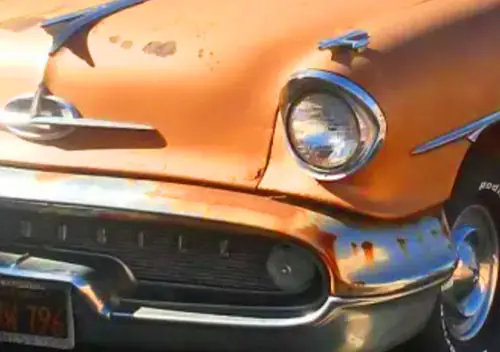
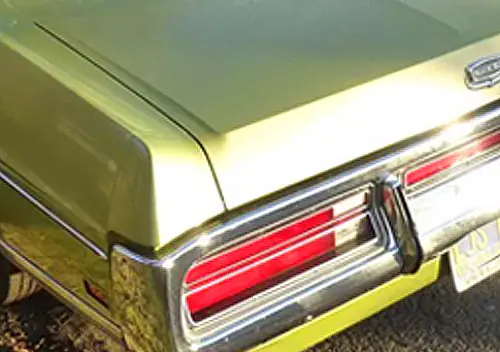
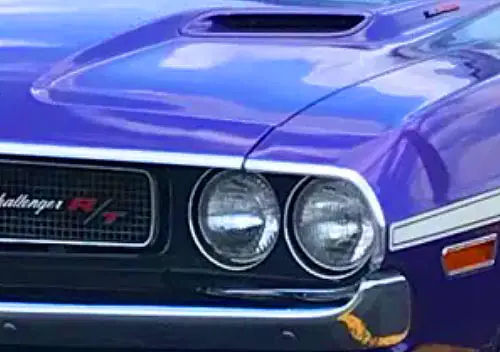

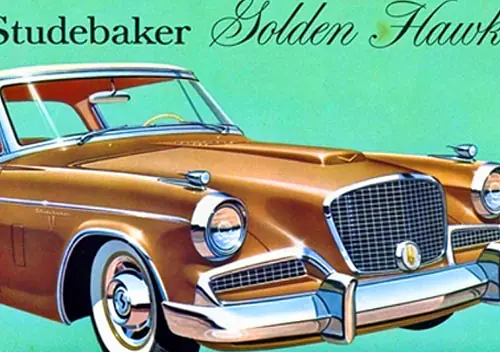
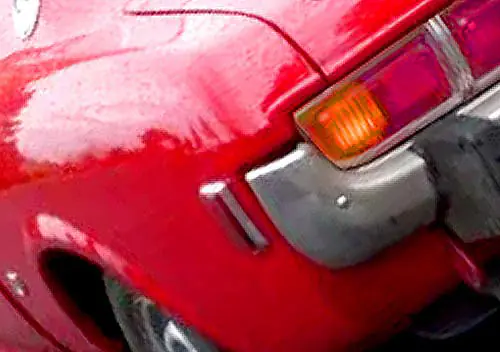
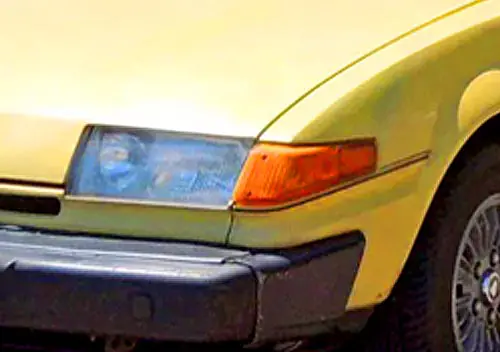
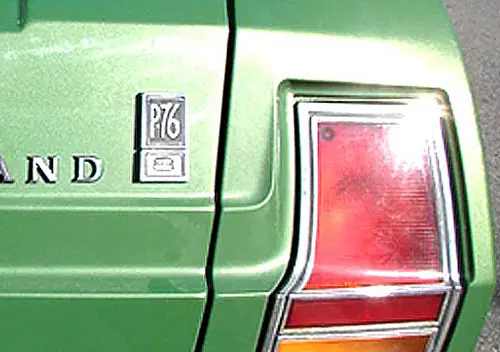
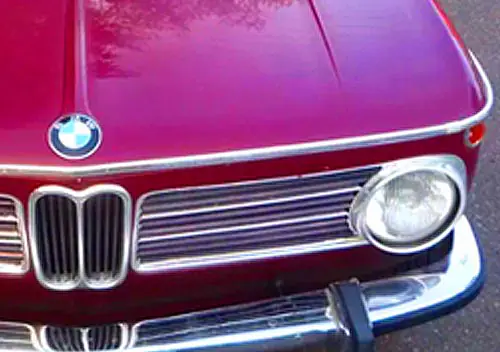
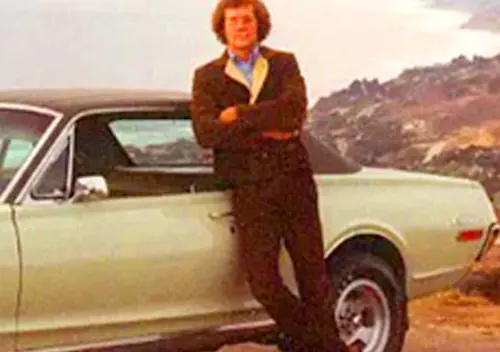
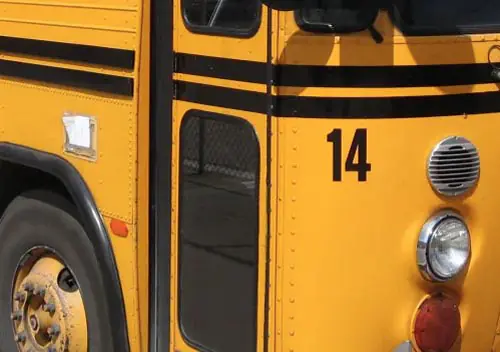
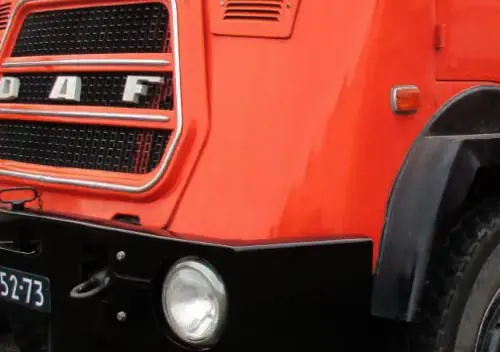
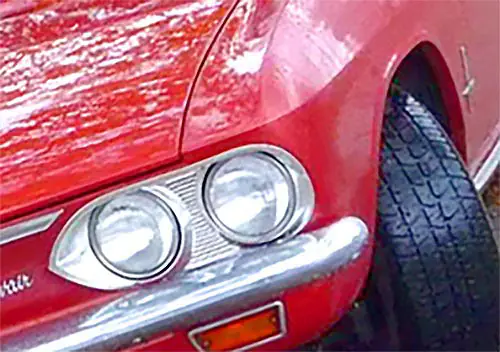
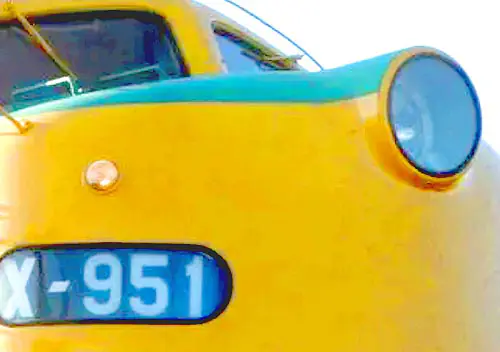
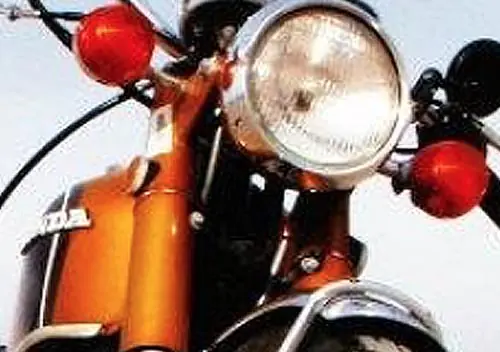


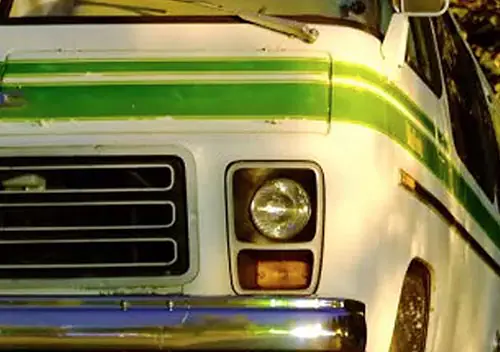

unfortunately, our “leadership” seems hell-bent on keeping this country frozen in 1960.
in all aspects.
Or 1860.
The year that Donald Trump has said was the best year in US history is 1956 and that is the year that he is trying to recreate.
I consider the year that I turned ten years old to have been one of the best years in history as well, at least for me personally…My parents the obvious socialists gave me and my brother a UBI of $2 a week and things were great, free healthcare at home, paid for schooling in 5th grade, the best meals in the world cooked by my mother…
I think the time has come – for the sake of the union as a whole, not just for minorities – for patriotic Americans to speak up against that “leadership”. Conservative or liberal, enough is enough!
In 1960-61 my family moved from rural/upstate Pa.to Mobile, Al. I was so naive that when I ran into examples of segregation I didn’t even realize it. A separate bathroom for blacks? Were they anatomically different from non-blacks? The same with water fountains, and both were almost always broken. When we traveled back and forth to Pa. to visit relatives you would see “No Coloreds” signs even at motels, and sometimes you just knew…even when there was no sign.
If you have children, there’s a book called The Gold Cadillac they might enjoy. It attracted my attention as a kid just because of the car-based title, but it’s a great read that makes a lot of children who live in a bubble pay better attention to what’s going on.
It’s the story of a black family from Ohio that take a road trip to visit family in Mississippi in 1950, and the negative attention they get for being in an expensive car & the racism they encounter along the way.
You reminded me of a similar book, intended for teen readers, but also quite enjoyable for adults: The Watsons Go to Birmingham – 1963. It is a historical-fiction novel involving a black family from Flint, Michigan who travel by car to Birmingham, Alabama and get caught up in the 16th Street Baptist Church bombing of that fateful year. Their ride is an old Plymouth called the “Brown Bomber.”
Excellent post. Thanks for sharing. We middle class white people have long experienced white privilege, and your post opened my eyes to injustices I’ve rarely, if ever, considered.
Back in the Eighties, I had the pleasure of having a fairly long conversation with an elderly lawyer in Nashville who had represented the ACLU and the NAACP back in the Forties and Fifties.
One of his clients was a black doctor who had made the mistake of stopping for gas at.a rural filling station in West Tennessee. For this act of lese majeste, the attendant ended up chasing his customer around his car trying to beat him with a tire iron, and the doctor got thrown in jail on some bogus charge.
The lawyer got the charges dismissed, and that was about the best outcome one could expect in those days.
I caught a news clip on YouTube from Channel 4 in Minneapolis called “Protesters Bond With Police”.
It was a piece worth seeing; one of those rare times when everything is done well; from the protesters, the police and the news coverage.
Love is, and has always been, the answer.
Very nicely done, Paul.
From an automotive perspective, I remember my first black teacher, Mrs Wetherly. The year.I was in her class, she bought a new Buick Wildcat from a long gone downtown dealership. I was too young to understand then. I hope she and her Buick were happy companions.
Thanks for the excellent post Paul.
Excellent article. Two things in particular caught my eye: In the first photo of the mob attacking the family in the Chrysler, the man at the front on the right is doing something that I see over and over in these old photos. He’s looking right into the camera, unashamed. Hell, he’s even smiling. No fear of reprisal back then, and no need to hide your hate behind code words. The US is depressingly close to going back to those days.
The other thing that made me cringe was one of the addresses for the “Coon Chicken Inn.” 8500 Bothell Way, just a little bit east of where I currently live. Yeah, it wasn’t just a southern problem.
“The US is depressingly close to going back to those days.”
we already are. police in a lot of cities are currently regularly using excessive force on people even though they know they’re on camera. They have too much of a “if I had to do it, then it must have been justified” attitude.
Some years ago I read a review of a book (whose title I forget) of photos of Seattle-area business signs of yesteryear. It specifically said the sign for the Coon Chicken Inn was the only ugly image.
I grew up in an upper middle class white bubble, and when I went off to college in 1967, I thought that if a Southern black man moved north, his problems would be solved. Yes, I was naive. I learned otherwise over the next few years.
There’s a saying that I think contains some truth: The Southern white doesn’t care how close the black man gets, as long as he doesn’t rise too high. The Northern white doesn’t care how high the black man rises, as long as he doesn’t get too close.
Very timely and appropriate topic Paul. Well done.
Back in the summer of 1976, my parents decided to take my brother and I on a daytrip to Syracuse, New York. We had been living in Ottawa, and it was my first trip ever to the US. Once we exited Interstate 81, my dad thought he’d just drive around the city without a road map. He eventually drove into a large Black neighbourhood. I remember we were all stunned that large numbers of Black people were separated as they were from the rest of the white people in the city. And we were also surprised that everyone appeared to be staring at us as we drove. At one point, when we made a stop sign, an older gentleman approached my dad’s station wagon, supplying my dad directions. Of course, Canada, the US and many countries have racial issues and tensions. My dad wasn’t naive, but I think he was even surprised a small, northern city would have a large segregated neighbourhood. I remember feeling saddened by this on the trip home. It had a big impact on me.
I suspect the militarization of the police in the US, and around the globe, is there to deal with potential riots/protests over economic injustice, more so than racial injustice. Large companies and corporate America will embrace racial justice. The same powerful people are very nervous these protests will grow into large scale demonstrations over economic inequality.
“I suspect the militarization of the police in the US, and around the globe, is there to deal with potential riots/protests over economic injustice, more so than racial injustice.”
the two are often intertwined.
honestly I think what’s been going on over the past few years is just the inevitable outcome of the ending of the post-WWII era. People who grew up during a time when we were economically untouchable (thanks to Japan and Europe needing significant rebuilding) can’t handle the knowledge that that era is going away and never coming back. When people get scared they turn to the comfort of politicians making empty promises and telling them what they want to hear, which makes people susceptible to being manipulated into ideological screaming and blaming “other people” for all of their problems (real and perceived.)
if one really wants to make America great again, it’s going to take a nuanced and well thought out plan of how to regain leadership in the world as it is going to be. Not by pretending we can stop the clock and drag the world back to 1957.
@Daniel M.
I-81 when it was built went right through Black neighborhoods and continues to hurt the community to this day.
There is a book called “The Big Roads” by Earl Swift. It is a great book about the creation of the US Highway system. I think car nuts will love it. The engineers did plan the roads through black and other minority neighborhoods. In my home town of Boston, they blasted through neighborhoods to build Route 95 through the city, but they did NOT get all the permits and approvals for the whole road. So they ended up destroying black neighborhoods to make a huge dirt hole to nowhere. The road then got stopped by the more affluent white neighborhoods. This practice happened all over the country. Many roads ended up not being built at all. Imagine New York City with the East Side Highway and the West Side Highway. Now add the roads that were not build. One was going to take over 31st street and be a double decker highway. Another would have cut through Harlem. There were a lot of bad feelings as cities all over the country had their low income neighborhoods destroyed for the roads while more affluent neighborhoods were not touched. And the low income neighborhoods were mostly black. They were targeted and had no recourse.
I-375 in Detroit. a *one mile* spur route that they’re now talking about decommissioning and filling in because it’s not really needed. Not that it really ever was, either, but no one accused Cobo of caring about certain things.
Yup. Same thing happened in Vancouver, BC: in the ’60s, planners decided to put in a big interurban highway and set about demolishing just guess what for it. There was enormous protest not only from Black people whose communities had blithely been kicked over like anthills, but also from a wide coalition of white people who considered the highway a terrible idea that would worsen life for all but the already-wealthy. The white presence and volume in the protests are surely what account for its success; the highway project was permanently scuttled. As for the Black people whose homes neighbourhoods had been bulldozed, well, the official reaction was unchanged: ¯\_(ツ)_/¯ .
Here’s another version of the same sad surprise: Much of Portland, Oregon is extremely white. I’ve noticed it every time I’ve been. Last time, In 2016 I was in (Southeast, IIRC) Portland for a Society of Automotive Engineers Lighting Systems Group meeting, and for one of the meeting sessions I needed one of those cakes with a photo printed on it in edible ink. I called around to various supermarkets with no luck. Eventually one of the Safeways I called directed me to another Safeway with a cake printer. I called and verified: Yes, so I drove over.
I don’t now recall street names, but as soon as I crossed one particular street, suddenly it was “Oh, here are all the Black people”. Very sudden transition that reminded me of another SAE meeting in Charleston, SC, in 2017. My hotel was right on the demarcation line: walk left, towards the water, and things got whiter and whiter (and one finds the public market, festooned above its great big door with a “DAUGHTERS OF CONFEDERACY” placard). Walk right, away from the water, and things got blacker and blacker. Guess which direction had the working street lights and traffic lights and the roads in good repair.
Charleston (and many Southern Cities) have “rings” emanating from their center as a result of “white flight.”
As black people gained affluence and moved to the suburbs, the white folks moved further out. Wash and repeat. It’s very apparent here in Columbia, South Carolina. Many of the inner city streetcar neighborhoods with the big houses are still predominantly black (and poor). The two counties that make up the bulk of the metropolitan area are mirror images of one another: 70% white/30% black in one and 70% black/30% white in the other. The predominantly black county evolved with nice neighborhoods that welcomed blacks in the 1970’s and is the choice of many professionals. It helps that we have Ft. Jackson in the county, so you have a very large military population, which also drove integration. My neighborhood is a mix of familiies, retirees and professionals/teachers. As the area grows and folks from Ohio and New England move in seeking warmer weather and cheap(er) housing, the pernicious effects of blatant racism
It’s not just southern cities. Indianapolis has those rings too.
ditto Detroit. Northern Macomb County is a clusterf**k of congestion and poor planning; it rapidly built up over the last ~15 years but many of the main roads were left narrow (one lane each direction) and when building all of these new McMansion subdivisions and corporate parks, they didn’t leave enough room to widen them. And this all built up because scaredy cats saw a black person and had to pick up and move a few more miles away from Detroit.
Of course, these people also moved themselves further away from work but they’ll relentlessly b***h about how much time they spend commuting. As if they didn’t make their own bed.
These types preach “personal responsibility” up until they’re called to account for their own actions. then it becomes “someone else’s fault.” we are a nation of babies.
The 1963-’64 U.S. television show “Eastside/Westside” is well worth watching—all 26 episodes—for a bunch of reasons: the actors, the acting, the cars and trucks, but primarily the uncomfortable issues it dealt with: class, race, and poverty; disability and prejudice and discrimination (probably why it lasted only one season; advertisers were surely squeamish). It’s free on YouTube; here’s an episode relevant to white flight.
An interesting and timely read. Growing up in Ontario just across the St. Clair River from Michigan we heard about some of these issues but they always seemed kind of alien to us. I read books and articles about racial issues and saw various TV shows about them as well. Here in Canada the thought of segregated restrooms, waiting rooms, restaurants, hotels and other public facilities seemed strange and backward. I couldn’t (and still can’t) imagine treating others in such a cruel and thoughtless manner, but there it is. Let’s hope the winds of change finally sweep this away once and for all.
Make no error: Canada has its own issues along this line. White Canadians have always cruelly mistreated First Nations/indigenous Canadians and still do, in pretty much all the same hideous ways as white Americans cruelly mistreat Native Americans. In WWII Japanese Canadians were “interned” (imprisoned) wholesale, just like Japanese Americans. Chinese Canadians and Indian Canadians were officially oppressed under vicious, blatantly racist laws for quite a long time in Canada. We don’t have the ugly stain of out-and-out chattel slavery and Jim Crow laws like the US does, but Black Canadians experience racism and discrimination every which way they turn, just like in the States.
ditto indigenous Australians.
Gee, it’s almost like nations founded via imperialism tend to have the same kinds of issues?
And don’t let’s forget South Africa and a whole bunch of other African countries.
Oops, I was wrong; Canada had chattel slavery for two centuries.
Paul, thank you so much for this excellent post and book recommendation. This book is now on my Amazon.com wishlist.
My late father immigrated to the U.S. in the ’50s as an African ex-patriate, and (sadly) learned many things about the dos and don’ts of that time, many of which were foreign to him as he spent many of his formative years in Europe. This post had me thinking about some of his stories he used to tell me about his own encounters with driving, police, and many other things. Odd that so much of what’s been going on recently isn’t that far removed from sixty years ago.
Thanks again for this, very much.
Thank you so much for this essay Dear Paul.
Interesting, informative. Thank you Paul. For once I did t feel guilty going to CC before reading the news this morning. Unfortunately yesterday wasn’t a good day in our community. And thanks for mentioning CAHOOTS … I’ve long thought that something like that would work here, a town which probably has many similar issues to Eugene. But I was unaware that there was a proven example running for 30 years. Thanks.
A timely, thoughtful piece from a CC perspective that shines a light on some of the degrading debasements black Americans had to endure in our not too distant past. No one subject to such humiliations would ever forget them, as well as their children and grandchildren who undoubtedly heard their anguished stories. Is itany surprise that resentments born from this era still exist?
Quite interesting about the affinity of black Americans for Buicks. Makes a lot a sense when you think about it. Makes me recall a story about the fine PGA pro golfer Charlie Sifford, for years the only black on the tour. Back when He played pros would drive from stop to stop, so a reliable car was important. Charlie loved Buicks and always had a new one. When driving through the south he would always try to have a fellow white pro as a passenger. Then, if stopped by the local law, he would claim to be the chauffeur, instead of explaining why a black man had such a nice car.
Like most people my heart has been heavy these past 2 weeks and that photo of the mob above is almost unbearable.
The Cahoots sounds like a fantastic, innovative, progressive idea of course from Eugene! And in stark contrast to “you gotta dominate or you look like a jerk!”
Paul, thank you for putting pen to paper, It adds so much context to what I am reading in the US papers. I think Cahoots sounds like an excellent Police alternative for many social misdemeanors..
Thanks Paul, for a timely look at the book and a glimpse of whats gone on in and is going on in another country.
Cahoots sounds like an idea that should be expanded. Here too, many of the tragic outcomes with police start with someone in crisis, and the situation rapidly escalates once the police arrive.
Accountability starts at the top, both on the local as well as the national level. However that’s only a starting point, it then needs to continue downward. That said, and I am in no way defending police tactics, if a policeperson had less reason to fear for their own life (or rationally be able to use that excuse) and/or if it would be significantly less “normal” for someone to be able to have or pull a gun on them, the police shootings possibly would decline as a result. Also, the police policing themselves by a different division within the same department seems a bit of a joke.
Unnecessary death is curiously extremely accepted in the American culture and often explained away and or given lip service with ridiculous “thoughts and prayers”. This is clearly evident in law enforcement, healthcare, as well as anything to do with gun control. The 2nd Amendment is an amendment so by definition something that was changed at one time and could/should be done so again but that’s not the only thing that could be changed for the betterment of society as a whole.
The protests are rightly significant, the people are rightly angry…Hopefully that anger continues through November. This country has been changing for the worse for some time now and while opportunity does abound, it certainly does not do so in any kind of equal or equitable manner and really never has.
It sounds like an interesting book and an extremely sad commentary on our “civilized” society. Thank you for the review.
while no one claims being a police officer isn’t a risky job, when it comes to likelihood of being killed on the job they’re a lot lower on the list than construction workers and truck drivers. we wouldn’t let a truck driver beat the tar out of someone because he “just wants to make sure he goes home that night.”
You may be correct if ALL factors or reasons are concerned but I would wager that truck drivers and construction workers are far less likely to be killed directly by another person that they are interacting with but rather due to other occupational hazards.
Haha, you sound so remarkably Canadian here Jim. lol 🙂
As you are hinting at, I think you have people in powerful positions politicizing racism, and using it to manipulate the public to gather support while dividing your country. For political gain.
I think restoring the ‘Fairness Doctrine’ (or a similar measure) would perhaps help return significant balance to what your media is also reporting. And improve/correct the perceptions many in the public hold. Too many powerful people are enabling the divisiveness.
I think shutting down Twitter and Facebook (and flushing all of the foreign disinformation trolls and bots with them) would help a lot.
I’m Canadian, and I was paying Jim a compliment. Not hinting at foreign interference. 🙂
I was referring to the part about the Fairness Doctrine.
I agree. The corporate media consolidation that started in the late 90s in the US, with much more limited journalism sources, and competition, does not help either. Corporate media working for the billionaires controlling the narrative.
Much easier said than done. Keep in mind that we do have a First Amendment that guarantees freedom of speech. The Fairness Doctrine was justified due to the fact that the airwaves belonged to the government, and the number of broadcast (over the air) outlets was limited.
Newspapers have never been subject to it or other government controls.
The decision to rescind the Fairness Doctrine was made at a time (1987) when cable tv and satellite tv were expanding rapidly, and there was no basis to apply it to them.
Ironically, Reagan’s team was not happy about the repeal of it, because that was before the rise of so many right wing radio stations, and as such, he and the conservative cause benefited from it.
Ideologically, it’s a mixed bag. Obama was against its restoration. The broadcast stations and networks’ influence has been waning for a long time, and now with the huge switch to online platforms, their influence is shrinking even more. I wonder if they will even survive long-term?
With the rapid growth of wireless, the broadcast spectrum is increasingly being sought for those services. Some stations, including the one I used to work at in LA, are in a program to sell back their licenses and go dark, for this reason.
There’s no way to “shut down twitter and facebook”. Keep in mind they and other social media sites have been used extensively to also build support for causes, such as the Arab Spring as well as the current protests.
There may be ways to force them to be more accountable, but that’s not going to be easy. The electronic Genie is out of the bottle; putting her back in is easier said than done.
I know, I wasn’t seriously acting like there’s any way to “shut them down.” I know they have played a role in good things, but IMO the bad stuff they allow to happen on their platforms outweighs it. I recall reading that CMU sifted through a ton of tweets pushing the “re-open America” talking points and estimated over half of them were being posted by bots. just based on stuff like “how did this account post from 4 different countries in the space of 10 minutes?” or “why did 25 different accounts post the same exact text at the same time?” not only does that show how many of these “movements” are either astroturfing efforts or mis/disinformation campaigns, it also leads to a lot of jerks getting huge egos because they don’t realize so many of their “followers” and “re-tweeters” aren’t real people.
don’t get me wrong, a near real-time communication platform isn’t a bad thing in and of itself. but the ones we have are deliberately designed to create bubbles around their users (via the almighty ALGORITHM) and feed them content that keeps them in a self-reinforcing feedback loop and has been a big part of what has killed political discourse in this country. Now it’s nothing but “my team vs. your team” screaming and ways for dangerous hate groups to find each other and congregate. And they won’t do anything about any of it, because it’s more important that Zuckerberg and Dorsey add another “0” to their net worth.
Some of the best independent journalism is at Youtube. As legacy media is attempting to gain a foothold there. I noticed for a number of years, the legacy news sites struggled for likes and subscribers. However, their numbers have climbed significantly with Trump in power. He has helped business for all media. A few of the larger independent left wing news sites have suggested Google’s algorithms now favour the legacy channels for some topics. Corporate media (ie: CNN. Fox) representing the billionaires, still largely controls the media narrative of course. As many older viewers still get their news from cable TV.
We dodged a bullet here in Canada when the right leaning Sun News Network was denied a licence to be a mandatory part of cable basic packages across Canada in 2015. They were nicknamed ‘Fox News North’. The rationale of the CRTC, our independent regulating body for broadcasting, was Sun News didn’t meet the standards necessary to qualify for mandatory basic tier programming. Many Canadians were relieved, looking at the damage done in the US, by a network with a similar ideology.
You are correct that T and FB aren’t (sadly) going away but there should be some governance, blatant falsehoods should not be allowed to stand just like they don’t in traditional media.
FB makes too much money off the falsehoods and selling of info while consistently lying about it, some employees are finally starting to grow a spine or conscience which is heartening I suppose.
T’s entire relevance seems based on the current president, if they ever actually stopped him from using the platform, it would become a pale shadow of itself. The best thing that ever happened to that company was the 2016 election, if someone else is elected the next time around I’d guess/hope it will become a shadow of itself.
I’m afraid Pandora’s box has been opened regarding YouFace, Twitbook and such. We have to take the bad with the good.
Someone, I forget who, once pointed out that we would never stand for hundreds of upper middle class people being killed in one go by the collapse of a building. A bunch of miners trapped underground is another kettle of fish.
Thank you for writing this article Paul. We certainly need some perspective during these trying times, especially the last two weeks. It’s also gratifying that everyone commenting has reacted positively, such a contrast to the nastiness often on display on the “other” site.
Tell me about it concerning other sites. My ForCBodiesOnly site is just the opposite. The amount of bigots commenting over there is astounding compared to the handful standing up like everyone we see here. Everything thing is law and order we need to bash some heads. Should be interesting when I log in as one poster, who I swear his shirt is darker tan now, I had to confront and say STFU. I bet I am real popular over there but hey it is an open public forum so come what may hopefully.
I’m mostly a lurker on this site as I have owned what I consider to be a “classic”, a 1977 Buick Electra for four years.. I’ve learned a lot about cars from reading this site and have figured out that I’m probably not the typical demographic on here as I am a young (ish) black woman.
I just want to say, I appreciate you Paul for this article.
I would agree that you’re probably not the typical demographic, but welcome.
Would love to see pics of your 77 Electra! Glad you are here!
Don’t want to take away too much from this article. But here’s one: (not currently for sale-is the original pic I took)
That’s a sweet car!
Wow…looks great! I like the red interior.
Welcome! As another youbg-ish (32) someone who loves GM full size cars very happy to have someone who is keeping these boats going.
This is very timely, and the Cahoots programme is a good one to help people who unfortunately owing to their mental state suffer the negative consequences of excessive force from law enforcement agencies.
Thank you, Paul, for this informative, enlightening, articulate post.
Thank you, Paul, for this article. I bought the book just now.
This issue had a small but felicitous effect in gaining support for civil rights legislation among members of Congress who repeatedly saw its impact firsthand. For example, GOP House Minority Leader Charlie Halleck from Indiana supported President Kennedy’s effort to introduce civil rights legislation because when he went to the resorts in Warm Springs, Georgia his African American driver was refused service in cafes and restaurants enroute.
Thanks for this thoughtful and compelling article, Paul – the perfect accompaniment to my morning coffee here on the west coast. You’ve sold some books today.
Thanks for this Paul. It’s an encouraging sign that there’s so much more public discussion of racism, and acknowledgement of its wounds.
Marques Brownlee, one of the premier tech reviewers on YouTube, posted this personal and insightful video a few days ago. It’s the kind of message we could hear more of.
Very good article Paul, and I agree that Cahoots sounds like a good way to go.
I was puzzled by your phrase “But our department has had relatively enlightened leadership and training, although there have been two shootings, in both cases the victims had mental health issues.” Could you expand on what you meant here?
Everything is relative. I feel better about the EPD’s leadership, recruitment and training than many others, and I’ve seen that in action. But it’s difficult to ensure that all officers fully live up to that.
Our Chief of Police made a statement recently, where he reiterated that the single most important factor was recruitment, meaning taking full advantage of psychological testing to improve the odds of not hiring those that are more likely to perform poorly. And I agree. It ultimately boils down to that, and the corresponding training.
But it’s far from perfect. There were two incidents that involved mentally unstable individuals with weapons (one a knife, the other a fire arm) where less forceful interventions may well have spared their lives. In the first event, it was pretty obvious that a lack of training resulted in his death. And that training was then instituted. The second case, involving a veteran with PTSD, was not quite so clear cut.
I am a great believer that hiring the right individuals is key, as well as firing the wrong ones. Unfortunately, police unions are very powerful, and have been able to negotiate clauses where incidents are not made public. Which explains why many of the cops that have been involved in high profile incidents had records of previous ones. And even if a cop is fired, it’s typically easy for them to get rehired in another jurisdiction, again due to being able to suppress personnel records through the union contracts. This is a common problem with bad actors in the law enforcement arena.
Thanks Paul, for adding some perspective on current events. Some of the things you describe sound more like Apartheid South Africa than the common perception of the US, and while many many people have undoubtedly come a long way, some clearly have not. There can be no justification for what we saw in Minneapolis, but there can be background and context.
You also touch on, by implication, the cross over between police law and order activity (catching murderers and bank robbers) and social work/guidance/find the straight line activity. “Let’s work out a plan that doesn’t involve the cops; follow it and they don’t need to know” can be a powerful message to some one having difficulty getting their life in a form that fits with everyone else.
A timely review on what appears to be a very enlightening book.
I had never considered the issue of how unexpected breakdowns could be far more than mere inconvenience to a black motorist. I had long noticed anecdotally that black vehicle owners had a marked preference for GM cars but had always wondered why. This makes a lot of sense because they were sort of the gold standard for reliability (and respectability) in that era.
That plus the fact the Henry Ford was an outright racist.
Henry Ford I was Anti-Semitic, but his hiring policies for African-Americans were regarded as enlightened for that time.
As is usually the case with Henry Ford, it’s not quite as simple as that.
Before WW1, Ford relied heavily on immigrant labor. But after the war, Ford no longer trusted foreign workers because of their pro-unionization leanings. So his decision to hire blacks was specifically because he expected blacks would be loyal in return and not support unionization.
Although he did open some supervisory level jobs to blacks, they were still overwhelmingly pushed into the most difficult and dangerous jobs. Any vintage film of the Rouge works makes that very clear: the steelworks and foundries were largely manned by blacks.
And the Depression changed the dynamic, as blacks began to oppose his political views and attempts at influencing local elections. They supported progressive candidates, and pro-union ones, such as Frank Murphy to win as mayor of Detroit, on his pro-worker platform.
This caused a serious deterioration of Ford’s relationship with blacks. Blacks were increasingly relegated to the most difficult and menial jobs. Ford had tried to exploit blacks, on the assumption they would buttress his profound anti-union stance. In the end, that came to bite him, as blacks joined the UAW in greater numbers. Ford’s brutal attacks on unionization have been well documented. Black membership was a pivotal element in the union’s winning recognition.
I would call that “self-serving” more than “enlightened”.
As you note, nothing is simple about Henry Ford I.
He also worked closely with George Washington Carver, and created a school for African-Americans in Richmond Hill, Georgia (where he and Clara had a winter home) when he saw the abysmal conditions of their school.
Even the dangerous work in the Ford foundries and steel mills paid workers considerably more than they otherwise would have earned.
Many companies were not hiring African-Americans, period.
Here in Pennsylvania, from what I’ve read, few, if any, minorities were hired by the Hershey Company prior to World War II, which had been otherwise noted for its paternalism. Certainly they were not hired for any supervisory positions, even low-level ones. Hershey, the town, was known as a “sundown town” for many years around here. (Hershey was originally a company town.)
Henry Ford was an 19th century farm boy and thought like one. With all his decisions in life, you keep seeing that 19th century farm boy mentality coming through. Considering what he was able to accomplish, he was able to take that mentality as far as it could.
He really isn’t complicated at all. When you wonder why he did something, you just ask yourself, “what would a country farm boy do?” Ford really didn’t change his beliefs regardless of his wealth, fame, or technological advancements.
I don’t like what he often said or did outside of his mechanical expertise, but what he said or did isn’t mysterious at all. All you had to do is ask a farmer, and they’d tell you.
Paul, thank you. Nothing to add ,simply than you.
(Pre-script: the following is not a refutation on this terrific article, just my perspective on what I’ve observed here in Eugene over the past week.)
Just a few nights ago, about six blocks from when I am typing this, the Eugene police jack-booted their way down 7th and shot (LTL rounds, I’m guessing) AND pepper sprayed numerous citizens who were literally standing in their own yards. They were not rioting, nor even marching. Just standing and observing. I’m not relaying hearsay; videos are all over social media.
Maybe, just maybe, there could be a silver lining on this shit sandwich. Perhaps the narrative will shift enough to steer our ship towards a truly “post-race” society. The police don’t seem to be discriminating based on race (I’m speaking of the “riots”, not the George Floyd case itself). The beatings are rather indiscriminate. Stand up to the fascists and they WILL bulldoze you, regardless of color. Classism is the real enemy here. Perhaps we will recognize that the ruling classes are Them, and we are all Us. Not the blacks, Hispanics, the poor huddled masses. Don’t let Them divide Us.
I’m not hopeful.
Thank you for writing this article and sharing this information. I found the the chain of racist chicken restaurants quite sickening and I’ve actually driven by that building on NE Sandy several times. Oregon sure has an ugly history when it comes to racial relations from massacring Chinese miners to sundown towns like Medford.
I’m glad to see that Eugene has a program to help with those suffering from mental health concerns. Washington County just got some more funding for their programs. I do worry about the number of white supremacists and anarchists in the Eugene/Springfield area, but at least the cops sound friendly.
You mentioned Buicks and Blacks – I recall reading in the mid-’80s that Black Chicagoans bought Buicks at something like 3x the rate of car buyers in general. Preferences do endure.
A powerful, timely article with a very unique perspective that is often overlooked. It ties our love of the automobile with the struggle of our black brothers and sisters. There are forces who seek to divide us at a time when we need to be United. Don’t let the bastards win!
I’m neither black nor American, but what these poor people went through brought tears to my eyes.
+1
The late R&B singer-guitarist Bo Diddley was mechanically inclined. He was quite capable of stripping down and reassembling an engine. He once said in an interview that redneck mechanics in the Jim Crow South wouldn’t lay a wrench on a black motorist’s car, so his abilities had come in handy.
What a great idea for a book, and what an excellent review. I will add this to my next book order. I might also order copies for a few of my white racist “friends,” who would never deliberately read a book on race, but might read a book about cars.
It’s a very sad statement on our society that racism exists in whatever form in 2020, in any country, against any color or ethnicity. In my view, it has no place in this world. We are all one human race, deserving of the same rights as human beings.
Thanks Paul for posting about this book. People, read about it, be aware of it, and know it represented the wrong way of constructing civilization. As much as slavery was wrong, black segregation was wrong, and privilege based on whiteness is also wrong. Prejudice and discrimination have no place in our social order.
In 2015 I went to Missouri. When I was done with my work-related business near Kansas City, I pointed my rentcar, a new Corolla, East toward St. Louis to visit a friend there.
Up ahead I saw two police cruisers parked across the median, driver’s window to driver’s window as they do. Just after I passed them, the one pointing toward the Eastbound lanes pulled out onto the road and started accelerating toward me. I wasn’t speeding, but I had been a little too close to the black Camry in front of me. The police car’s light bar came on, so I made my way to the right lane and pulled off onto the shoulder.
The officer went to the passenger side of the car…and I couldn’t roll down the window. It wouldn’t go. I hit the driver-side switch: nothing. I reached over and hit the passenger-side switch: nothing. Meanwhile there’s a law enforcement officer out there rapidly losing his patience, rapping on the window and loudly saying “ROLL DOWN THE WINDOW!”. Finally I opened the passenger door and explained it was a rentcar and the windows didn’t seem to be working.
At that point the situation de-escalated; the officer didn’t like how close I’d been to the black camry, and I politely agreed he was probably right about that. He asked me to please keep more distance, and sent me on my way.
But I happen to be white, and I happen to speak “standard” English as my first language. Things could have easily gone very badly if either of those not been the case; people—mostly black and brown ones—have been brutalised and executed by police officers—mostly white ones—for far less than reaching across the car to push the switches or open the door. The whole time, especially at the start when I was struggling to comply with the officer’s directive to open the window, a large chunk of what was going through my mind was “All the windows are still intact and I’m still in here instead of face-down on the pavement because I’m white”.
It was only after the roadside conversation was over that it occurred to me to look for a window lock switch: yep, there it was, awkwardly placed in a semi-hidden location, and it turned out to be engaged. Shame on Toyota (and Honda, and perhaps the whole of the Japanese auto industry) for a dumb, thoughtless window lock configuration that disables the entire power window system; the correct way is for the window lock to disable the passengers’ window switches while leaving the driver able to open and close all the windows.
This story hits very close to home. My nephew is one who likes to drive at 70-75 mph when in his car and not the company work truck. My nephew is half white and half black as is his sister. In fact all the kids in my family below my brother, my sister and me are all mixes combining Black ,Asian, and Hispanic. They are all incredibly intelligent and accomplished but until one gets to know them all one sees is something else. Heard it first hand when people have seen a family picture and made a comment to my wife who is a Filipina. My wife, born and raised in the Philippines, ran into her first cases of bias here (17 years now) as she works in a nursing home. A few male patients said she should go back to her country. She does have a black belt in taekwondo so she doesn’t faze easily.
I also had a first hand experience courtesy the Oakland Police back in the 80s. I had always dated women of non-white backgrounds with never a problem. However during a year when I was dating a Black women I get stopped in Oakland by the Police. Oh, I didn’t use my turn signal on my right turn. Really, huh. However, when the officer asked for both my ID and her ID (when do Police ask for that from a passenger) it began to dawn on me that the stop was because of her. Apparently, he thought she was a prostitute as he wanted to know where we were going.
Yes, white privilege is hard to break as it has been present the day after the Civil War ended. Can’t really be equal if you can’t vote. Can’t be equal if you can’t get an equal education. Can’t be equal if you are always red lined into certain neighborhoods. Can’t be equal if you can’t get decent health care. Check the history on the Electoral College and the Three Fifths Compromise.
Thank you, Paul for your courage in writing this excellent “book review” at such an important time for our country. I think back to when I was in private practice, and had to help parents in making the agonizing decision to have their children committed to the local psych hospital, not knowing if the officers coming to detain their child would be understanding of mental health and substance abuse issues or not. Many were not.
I am also reminded, from a documentary of the Montgomery bus boycott, of how the African-American churches of the community also provided a kind of ride-sharing service, helping connect people with cars with people who needed rides to work, so that Montgomery could continue to function without persons of color riding the streetcars. A lot of people still walked, but without this service, it would been difficult to make the boycott stick. You could cram a lot of commuters into a big Buick.
Thank you for this story Paul. I just returned from George Floyd’s memorial in South Minneapolis. I recently purchased my first home in North Minneapolis. Many north siders believe the primarily black owned businesses that burned during the recent riots including our only auto-parts store was the work of outside arsonists. We didn’t receive any National Guard troops like the south side did. As a result residents have stood guard overnight to protect our grocery stores. On a positive note Klavierkunst, Davide Marte performed at George Floyd’s memorial tonight. Davide tows a baby grand piano using a power trailer with his bicycle. The picture shows the dual motor hooked up to the pianos front leg although his bicycle is not in the picture.
As a long time Eugene resident (with too many old cars pre-dating this site, including one featured more than once here, “The Artists Car”, I believe, 1970 Mercury Montego), and as a life long bartender, waiter, musician, and artist, I’ve seen CAHOOTS in action (and called them for help and instruction) more than a dozen times. I’ve known mental health professionals, former and future police, hippies, lawyers, and too many others to mention, gain from and gather respect for their services, as well as become providers and employees within the organization. We are very lucky to have them. But the service is not uncommon… something that every compassionate individual would provide to those that are without the services, understanding, stability, or support that most (but not all) of society shares without thinking or noticing. We can’t all “step up” like they do. So cheers, Paul, and cheers, CAHOOTS!
Thank you, Paul, for both the book recommendation and this thoughtful and important article. What the protests we see happening all over the country, in big cities, suburbs, and small towns tells me is this has been an issue for a lot more of the country for a lot longer time than most people realized. I hope we can productively harness that awakening.
Excellent review, Paul – thank you very much. This reminds me of my father’s experience as a newly minted U.S. Army 2nd lieutenant. He and his classmate had both graduated from Officers Candidate School on the East Coast, and were both assigned to their first duty stations at Fort Sam Houston in San Antonio, Texas.
They decided to drive in my father’s car to get there. The only problem was that my father was White and his friend was African-American. As my father described it, they had to drive straight through and carry all their food with them, as there was not place the two of them could stop for the night together.
They made the trip without incident, but the experience had a profound impact on my father. He had grown up in an all-white rural community, and it was his first encounter with the color barrier. He went on to a distinguished military career, retiring as a colonel, and throughout his life he went out of his way to support fellow officers and enlisted men of color.
I remember my parents hosting parties when I was growing up that were diverse as could be, and my father’s closest friend was a fellow officer who had grown up in Haiti. One of my father’s proteges was an African-American officer who was in a mixed-race marriage – my parents were godparents to their first child. I credit my own racial attitudes to my father’s example – he didn’t just talk the talk, he walked the walk.
A most upsetting piece, but inevitable, and necessary. I knew some of this stuff, but have never stopped to consider the extent, the sheer detail, of how racism might be enacted. Beyond horrible.
I don’t write from a country that has much to boast of. Australia’s Indigenous history under white rule is different only in the proportion of people involved: in many ways, the history here is worse, and continues to be so in some areas, especially as it relates to police treatment and deaths.
This country also only got fully rid of the White Australia immigration policy in just 1973.
We had a Black Lives Matter protest here in Melbourne this weekend. I disagreed with the timing, in a pandemic, but not the need. Many of the US issues, including thuggish police unions, apply here too. Blessedly, the politics is not (yet) quite so partisanly divided about it.
How sad we should even be having this discussion in 2020.
On behalf this country, I apologise, abjectly, for ever letting loose Rupert Murdoch on your country. His greed for power has not, to say the least, helped America.
Vote!
Great article, but as a history teacher in the 4th paragraph I believe you meant to say Frederick Douglass, not William.
I am especially skeptical about the chances of police unions and their fellow travelers doing the right thing regarding this fiasco. This being an election year, don’t hold your breath while waiting for politicians of any stripe to make things better. Unions are a key constituency for Democrats, so solidarity forever and common sense be damned. Meanwhile the Republicans occasionally pick up table scraps of endorsements from police unions, so they won’t be pushing much either.
Thanks for pointing out that typo. Fixed now.
Outstanding post, Paul. The American experience is a painful and traumatic one for so many people of non-European descent. That book harks back to a more overtly horrible time, but things have not changed quite as much as we’d like to think they have.
I’d like to reassure all US-based folks on one thing though: racism is not unique to your country. It’s the most widespread forms of human stupidity in the world. It’s still alive and well throughout Europe and beyond. I’ve seen Africans being racist towards Asians — but even more racist towards other Africans. I lived in Myanmar, where hating your neighbour is a national sport and some minorities are victims of actual State-sanctioned pogroms. And nowadays, in Japan, I’m finding myself on the receiving end of a very mild but perceptible form of racism from some people.
The thing that sets America apart are the protests. People are taking to the streets en masse to voice their disgust at the lingering stench of racism. And that’s a hugely positive thing.
I need to get a copy of this book. Thanks Paul for your review and insight.
I’d heard about The Green Book but never saw it. Thank you for the timely and informative article. As a Eugenean I can confirm Paul’s observations about CAHOOTS. They are universally respected for their good work.
By the way the first Federal anti-lynching law was proposed in 1900. Many more have been proposed over the years. To this day there is still no Federal anti-lynching law.
Lynching is first-degree murder, which is illegal in every state in the union. The bills you referenced would make it a FEDERAL crime. In 1900, some states were not prosecuting people for committing this crime. That is not the case today.
He used the word “Federal” two times in his comment.
The problem in more recent years was not that lynchers weren’t tried, but that the all-white juries either acquitted them or handed out very light sentences. This was the case in the notorious Emmet Till lynching in 1955 where the perpetrators were acquitted.
Just as we need to take a careful look at the increasing militarization of the police, we should not be rushing to federalize the crimes code. There is a reason that states were left with the primary responsibility of drafting a criminal code, prosecuting violations of said code, and determining what sentence should be imposed for various offenses.
The last lynching that I could find (as opposed to a murder where the victim was a minority and the perpetrators were white, and was thus dubbed a lynching by the press or various parties) happened in 1998, or 22 years ago.
That case happened in Texas – the James Byrd case – and the perpetrators were convicted. One was sentenced to death in a state court. He was executed via lethal injection by Texas in 2019.
Things have changed considerably since 1955. We need to tread carefully before further federalizing the crimes code.
You’re a bit late and madly out of the mainstream on that one. I’m sure you’re aware that the Emmett Till Anti Lynching Act is at this moment only one single senate vote (Paul Rand) away from becoming law. It passed the house 410-4, and has the backing of 99 senators. Rand was initially in favor, and now has some hang up about the wording.
It defines lynching more broadly, in terms of a hate crime. Federal hate crime legislation has been instrumental in the past to bring to justice those that may have either fallen through the cracks in various state criminal codes, or were insufficiently prosecuted. As you undoubtedly know, the federal government has often had to step in to assure that the rights of its citizens are protected in the face of weak state laws or inadequate prosecution of them.
We really would be back in the 1950s or earlier if it weren’t for federal acts. You think the states would have passed Civil Rights Acts? And a few other critical ones that have so drastically altered the rights of all citizens. Relying on states to always do the right thing is a fools errand. That’s why we have a federal government.
And, at one time, being against Prohibition and the national 55 mph speed limit was out of the “mainstream.” Who turned out to be right?
I’m not seeing any evidence that states, in 2020, are, on a widespread basis, declining to prosecuting murders committed within their borders. It’s not 1955 anymore.
Lynching someone is first-degree murder. Are states not prosecuting people who commit this crime? (Even the federal bill’s beginning section on “Findings” essentially states that the last lynching happened in 1968, or over half a century ago. Although I would put the date at 1998, with the James Byrd case, which was successfully prosecuted by the state of Texas.)
Is there evidence that lots of states are ignoring this crime – even or the crime of first-degree murder, or attempted murder, in general? Yes, some states turned a blind eye in the early 20th century, but that is not proof that the same thing is happening today.
Paul, I certainly respect your position.
I just believe that, in the wake of Mr. Floyd’s death, the resulting energy would be better spent addressing civil asset forfeiture reform, the abolition of no-knock warrants, how cities handle and record police disciplinary actions, and the dependence of municipalities on fines from nuisance laws (which hit poor people harder).
At this point, making the act of lynching a federal crime isn’t going to address any of the issues that have been brought to the forefront over the past few weeks.
But, if you believe differently, I respect that.
I just believe that, in the wake of Mr. Floyd’s death, the resulting energy would be better spent addressing civil asset forfeiture reform, the abolition of no-knock warrants, how cities handle and record police disciplinary actions, and the dependence of municipalities on fines from nuisance laws (which hit poor people harder).
Totally agree.
That Anti Lynching Act is already several years old. I don’t see it as a panacea. But at this stage of the game, I don’t see the point of one senator holding up the clear wishes of Congress to get it on the books.
The fact that it is prosecuted in all states is not the issue. The issue is that since 1900, when it was needed, it couldn’t get passed. It couldn’t get passed years after to this day. I’m more concerned with the message it would send to a group of people who were the first hand recipients of the act and just maybe it means something to them.
What I am talking about is symbolism/acknowledgment which is very powerful. Bad is swastika to Jews while Confederate flag and noose is bad to the black community. Passing this would be a formal acknowledgment of how heinous this was to those who suffered from it. So don’t look at it through your prism but try out someone else’s prism for a different view.
And the issue is that today, there is no proof that states are not prosecuting people for committing this particular crime. The last lynching was in 1998, and the perpetrators were punished by the state (with one of them executed for his part in the crime).
If people want change regarding police behavior, they need to start with the local and state politicians who are responsible for the creation and daily administration of metropolitan police departments, as well as the enactment of nuisance laws. Then focus on passage of civil asset forfeiture reform and legislation abolishing no-knock warrants. Passage of the Anti-Lynching Act at the federal level will not do one thing to address those issues. Focusing on symbols instead of concrete results is one reason we are still facing these issues.
I have nothing to add other than my thanks for writing this article. Unfortunately racism still exists in this country and the current political situation emboldens some people to be more upfront in expressing racists thoughts and actions. As long as some people can get away with light punishment, if they are punished at all, many people will continue to feel that they are second class citizens at best. The militarization of police forces, while certainly not the sole cause of social unrest, certainly contributes to it. In the past most cities had a requirement that police officers reside within the city limits in order to be on the police force. For a variety of reasons this is no longer the case in many areas. An unintended consequence of this is that many people view the police as an army of occupation, one whose members show up to work their shift and then return to their suburb, far away from the city where they work.
Are we there yet?
Thanks for this. So refreshing to read something that isn’t full of childish rants and stupid parroting of BS “News” over and over.
This needs to be thoughtfully read by as many people as possible.
Thank you Paul for posting this book. I honestly had no idea that even simple road trips had to be calculated to that extent, to be living in that kind of fear with nothing but hope to keep you going. The fact that it still exists now is just crazy, even after all that has been accomplished, including having a black president for two terms! And white cops still want to act as if it is all based on “what if’s” with encounters with black people that determines their reaction to the situation as opposed to what is actually happening in from of them. This was the case with my situation 15 years ago. We were searched based on assumptions, instead of what we actually were, 6 black college students hanging out on the corner in Harlem. Scared the hell outta me!
This is also interesting to learn that black folks favored a particular type of car based on reliability, size and ease of maintenance, which may be why a recent study showed that they prefer Toyota’s now over American brands, with Chevy is in the top 3 I believe. So even if the reasons may not be the same anymore, they’re still following that same mentality, reliability and ease of maintenance.
A couple of times, I went to buy KFC chicken at the first KFC restaurant in Corbin KY. There are some historical displays from Harlan Sander’s first years as owner.
Now I know that black families were not permitted in his restaurants. It was customary. Furthermore, what I’ve been told is if he sold KFC to black customers, he would have had a “colored only” window in the back of his restaurant.
So I asked, “did Mr. Sanders have a “colored-only” window he sold his food out of for his black customers?” The museum’s manager couldn’t fathom my question, and kept claiming that Mr. Sanders’ restaurant serve without discrimination. It is a bit frustrating when someone who should know the history of the museum they are managing, doesn’t know the history of the museum they are managing, isn’t it?
I asked him when Mr. Sanders did begin serving black customers in his restaurant, and again, the manager refused to acknowledge that Mr. Sanders did not discriminate against anyone. I frankly find that impossible to believe. The good folks of Corbin Kentucky would have burned his place down if he had.
Back home, I asked my aunt, who was raised in Asheville NC about this. She told me about the special guide books for blacks that would have told travelers that Mr. Sanders’ motel and restaurant didn’t serve blacks, or if he had a back window. She then told me that he probably didn’t have a “colored-only” back window in that part of Eastern Kentucky.
Finally, I would like to add this to your thoughtful posting.
I was an AAA hotel/motel inspector and wrote one of the guidebooks. I was the youngest person to have ever done the job, and worked with many old-timers who had been on the road as an AAA Approved Accommodations inspector for decades.
I remember one of the managers of our group, telling us that when the 1964 Civil Rights Acts became law, AAA required all AAA inspectors to ensure that their TourBooks listed only those properties that were open to all races. He related to me the challenges of our Southern AAA inspectors in enforcing these new requirements.
AAA inspectors develop relationships, both good and bad, with the properties listed in the AAA TourBooks. So, several of the AAA inspectors I knew had to tell owners they personally knew, that they could no longer be AAA approved if they discriminated.
It was often a very ugly situation. Not only did they have to tell an owner what their rating was going to be for the forthcoming publication, they had to tell them they could no longer be listed because they could no longer discriminate on the basis of race. It was a very difficult time. The AAA inspectors didn’t always agree with the Law, and I’m certain that they expressed their disagreement with the owners who didn’t permit black customers, but it was done.
Thanks for the well-written review and the thoughtful editorializing. I was not aware of this book, but have now added it to my To-Read list. The opening chapter of “Overground Railroad” by Candacy Taylor is titled “Driving While Black”. Published just about a month earlier than the book reviewed here, it talks about a variety of black travel experiences.
Paul, I think the only thing better than your post and review of this book is the thoughtful, enlightening, and measured discussion here in the comments. Thanks for writing this, and more thanks for building this community.